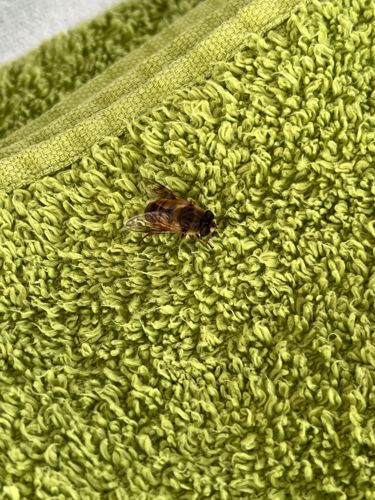Drone Fly (also Rat-tailed Maggot for larva)
Scientific Name: Eristalis tenax
Order & Family: Diptera (True Flies), Family Syrphidae (Hoverflies)
Size: Adults typically measure 10-16 mm (0.4-0.6 inches) in length.

Natural Habitat
Widely distributed globally, found in various habitats including gardens, agricultural fields, meadows, near water sources, and urban areas. Adults are often seen on flowers.
Diet & Feeding
Adult drone flies feed on nectar and pollen from a variety of flowers. Larvae (rat-tailed maggots) are aquatic and feed on decaying organic matter, bacteria, and microorganisms in stagnant, polluted water.
Behavior Patterns
Drone flies are Batesian mimics of honey bees, meaning they look like bees but do not sting, providing them protection from predators. They are excellent fliers, capable of hovering. The larvae are unique for their long 'rat tail', which is a breathing siphon allowing them to obtain oxygen from the surface while submerged in oxygen-depleted water. They undergo complete metamorphosis.
Risks & Benefits
Benefits: Adult drone flies are important pollinators of many plants, including agricultural crops. Their larvae play a role in breaking down organic matter in aquatic environments. Risks: While generally harmless to humans, the larvae (rat-tailed maggots) can occasionally cause accidental myiasis (infestation of living animals) if ingested or if they enter the body through other orifices, though this is rare and not a significant health concern.
Identified on: 9/4/2025